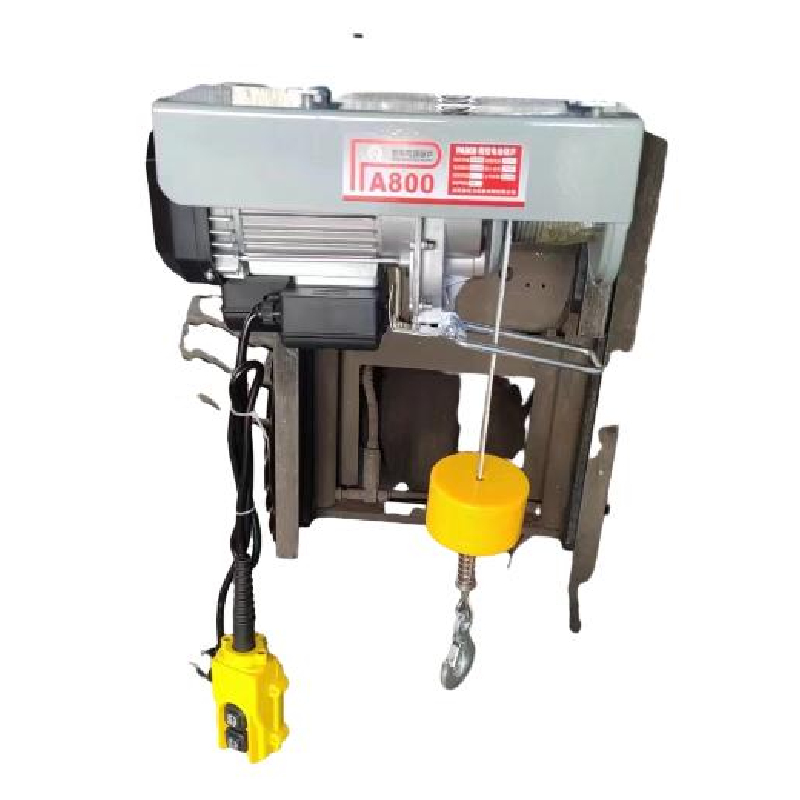


Understanding Lever Hoist Chain Blocks Essential Tools for Lifting
The lever hoist chain block, often simply referred to as a lever hoist, is an essential mechanical lifting tool widely used in construction, industrial, and warehouse applications. With the ability to lift heavy loads with minimal physical effort, lever hoists have become an indispensable piece of equipment in various sectors. This article explores the functionalities, advantages, safety features, and applications of lever hoist chain blocks.
Functionality and Mechanism
A lever hoist chain block is designed to lift and lower heavy loads by using a simple mechanical system. It consists of a hand lever, a ratchet, a chain (lifting chain), and a hook for secure attachment to the load. To operate a lever hoist, the user pulls down on the lever, which engages a ratchet mechanism that moves the load upwards. The hoist can lift objects significantly heavier than a person could manage alone, making it a highly efficient tool for material handling.
The lifting mechanism relies on the principle of mechanical advantage, where the force exerted by the user is amplified, allowing for the safe lifting of weights that would otherwise be unmanageable. Lever hoists are typically rated for capacities ranging from several hundred to several tons, and they can be used for lifting, pulling, or positioning loads.
Advantages of Lever Hoist Chain Blocks
One of the principal advantages of lever hoist chain blocks is their portability. Unlike electric hoists, which require a power source, lever hoists are manually operated and can be utilized in remote locations or areas without available power outlets. Their lightweight design also allows for easy transport and storage, making them a practical choice for contractors and tradespeople.
Another significant benefit is their cost-effectiveness. Lever hoists are generally more affordable than electric hoists, making them an attractive option for small businesses or individuals with occasional lifting needs. Furthermore, since they do not rely on electricity, there are no operating costs associated with power consumption.
Lever hoists are also incredibly versatile, suitable for a variety of applications, including warehouse lifting operations, construction work, and even for automotive repairs. They can secure loads at various angles, providing functionality in tight or challenging spaces where other lifting devices might not be effective.

Safety Features
Safety is paramount when working with heavy loads, and lever hoist chain blocks are designed with several safety features. Most units include a built-in overload protection system that prevents the hoist from being used beyond its rated capacity. This feature minimizes the risk of equipment failure due to overloading.
Moreover, reliable braking systems are integral to the design of lever hoists, ensuring that loads remain securely in place when the lever is not being actively operated. The hooks are usually equipped with safety latches, which further prevent accidental disengagement of the load.
Applications in Various Industries
Lever hoist chain blocks are utilized across multiple industries due to their adaptability. In construction, they are commonly used for moving heavy materials such as steel beams or concrete blocks. In warehousing, lever hoists facilitate the stacking and organizing of inventory, while in the automotive industry, they can be used for lifting engines or other heavy components during repairs.
Additionally, they play a crucial role in the entertainment industry for rigging and hanging lighting systems or staging components, showcasing their versatility.
Conclusion
In summary, the lever hoist chain block is a vital tool that enhances efficiency in lifting and moving heavy objects across various industries. Their unique combination of portability, cost-effectiveness, and safety features makes them a practical choice for both professionals and DIY enthusiasts. As industries continue to advance, the importance of reliable and efficient lifting solutions like lever hoists will remain a key element in material handling practices.



